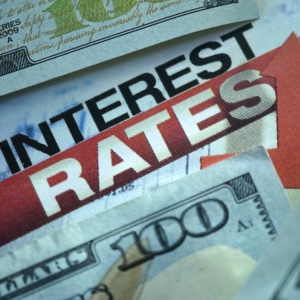Federal Reserve Chair Jerome Powell recently discussed the Federal Reserve’s stance on interest rate cuts, urging Americans to remain patient in the central bank’s efforts to combat inflation. While acknowledging the strength of the US economy, Powell indicated that interest rate cuts are likely to occur later this year, but not in March as previously expected by Wall Street.
The Interview About Interest Rates
In an interview on CBS’ “60 Minutes,” Powell explained that the Federal Reserve aims to be more confident in the downward movement of inflation towards the target rate of 2% before implementing rate cuts. However, he suggested that achieving this level of confidence by the March meeting is unlikely.
 This marks a shift from the Federal Reserve’s previous approach, which involved aggressive interest rate hikes over a two-year period starting in April 2021 to address rising inflation rates. Currently, the Fed’s benchmark lending rate is at a 23-year high, but indications of a policy pivot are emerging. While interest rates were held steady at the last policy meeting, rate cuts are anticipated later in the year.
This marks a shift from the Federal Reserve’s previous approach, which involved aggressive interest rate hikes over a two-year period starting in April 2021 to address rising inflation rates. Currently, the Fed’s benchmark lending rate is at a 23-year high, but indications of a policy pivot are emerging. While interest rates were held steady at the last policy meeting, rate cuts are anticipated later in the year.
Recent months have seen a significant easing of price hikes, bringing inflation closer to the Fed’s target. Despite projections by Fed officials in December indicating rate cuts in 2024, market expectations have shifted, with some anticipating cuts as early as March.
Powell emphasized the importance of restoring price stability, highlighting the desire for low and predictable inflation rates that don’t burden individuals in their daily economic activities. He expressed confidence in the Fed’s path towards achieving this goal but emphasized the need for caution.
While economic indicators, such as job growth and consumer sentiment, suggest a strong economy, challenges persist, including high grocery prices and inflated rents, which continue to impact many Americans.
Despite pressure from politicians, Powell reiterated the Fed’s independence from political influence in its decision-making processes. He emphasized the importance of integrity in maintaining the Fed’s credibility and effectiveness in achieving economic stability.
Looking ahead, Powell acknowledged potential economic risks, including geopolitical turmoil and challenges faced by regional banks. While he expressed optimism about the economy’s resilience, he cautioned against making definitive predictions, emphasizing the need for vigilance and adaptability in addressing emerging challenges.
How Do High Interest Rates Affect Horseshoe Bay Buyers?
High interest rates can have several implications for buyers in Horseshoe Bay, Texas, particularly those interested in purchasing real estate properties. Here are some ways in which high interest rates may affect buyers in this area:
Increased Mortgage Payments
High interest rates typically result in higher mortgage rates for buyers. This means that buyers in Horseshoe Bay may face increased monthly mortgage payments, potentially reducing their purchasing power and affordability. As a result, some buyers may need to adjust their budgets or consider more affordable housing options.
Reduced Affordability
With higher mortgage rates, the overall affordability of homes in Horseshoe Bay may decrease. Buyers who were previously able to afford certain properties may find themselves priced out of the market or unable to qualify for the same loan amount due to higher interest rates. This could lead to a slowdown in the real estate market as demand decreases.
Impact on Investment Properties
For buyers interested in purchasing waterfront homes in Horseshoe Bay as investment properties, high interest rates can affect the profitability of their investments. Higher mortgage rates may result in lower rental yields, making it more challenging for investors to generate positive cash flow from their properties. This could deter some investors from entering the market or prompt existing investors to reconsider their investment strategies.

Slower Market Activity
High interest rates can contribute to a slowdown in market activity as fewer buyers are able to afford homes or qualify for financing. This could lead to longer days on market for properties, increased competition among sellers, and potentially lower property values as demand decreases. Buyers may also be more hesitant to make large financial commitments in a high-interest-rate environment, further dampening market activity.
Impact on New Construction
High interest rates can also impact new construction projects in Horseshoe Bay. Builders may face higher borrowing costs, which could lead to increased construction costs and ultimately higher home prices for buyers. Additionally, higher mortgage rates may deter some buyers from purchasing newly constructed homes, potentially slowing down the pace of new development in the area.
Overall, high interest rates can pose challenges for buyers in Horseshoe Bay, affecting affordability, market activity, investment decisions, and new construction projects. It’s essential for buyers to carefully consider the impact of interest rates on their purchasing decisions and to explore alternative financing options to mitigate potential challenges.





